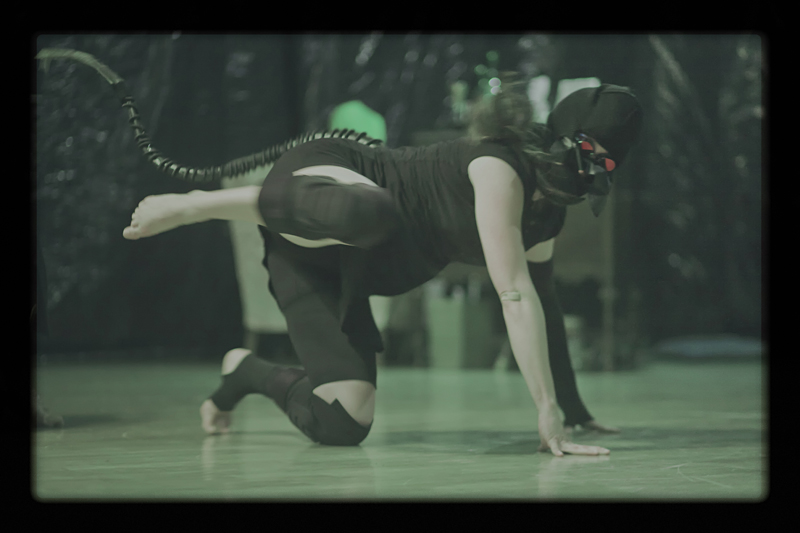When Paige Barnes, with her musical collaborator Christopher Hydinger, did a chamber version of this show a couple of years ago, I was blown away. Barnes and her other soloists spent the entire performance in the awkward place between standing and sitting. She put little articulations and unconventional shapes in the foreground, taking big kinetic risks in tiny spaces. There was an undercurrent of discomfort all the way through, yet it was extremely beautiful, close-quarters work.
She has now expanded that study to a full-length work, but the initial impact has been somewhat lost in the process. She’s added a conglomeration of stuff—accessories and a higher concept—which have made the piece less interesting than the original nugget.
Ayudapii is subtitled “The Primitive,” but it really feels much closer to post-apocalyptic. You wait in a narrow hallway until performer Paul Budraitis starts to rant that “rain is here to kill you.” You then follow him into the studio, which is lined with black plastic sheeting, and sit on rolled-up towels. After the lights go out, a scrabbling noise in the corner turns out to be a refugee in foul-weather gear—this is Hydinger, who takes a seat in a high-backed chair next to a fussy dresser set. Open Studio is on the second floor, but here it feels more like a bomb shelter.
The dancers (Mônica Mata Gilliam, Alice Gosti, Allie Hankins, and Shannon Kay Stewart) crawl through the same gap in the plastic, wrapped in black with long shining tails coming from the small of their backs. The tails give a simian feel to their four-limbed locomotion and herding behaviors, but the knives strapped to their thighs imply a different kind of community. As they roam the space, passing between rows of the audience, it’s not clear if we’re looking forward to an unhappy future or sideways at a different set of evolutionary possibilities.
The work has several arresting images: dancers scrambling on all fours through the maze of the audience, pausing to sink onto their haunches, then turn in the same direction as if they could smell scat with their backs; the beautiful coordination of their arms and legs in crawling; the satisfying thwap of their tails hitting the ground as they shift direction.
By rejecting standard dance maneuvers, Barnes’ original piece developed a series of alternatives for human animals that were not easily categorized. Here, though, the ominous surroundings, and lyrics that mention firing squads and tell us to “load up your rifle,” are certainly powerful, but also limiting.
Ayudapii (pronounced uh-YOU-duh-pie) is described as the first in a three-installment series called The Evolution of Need. I’m hoping the next chapter might re-examine the subtler and more eccentric parts of the initial project, making this interpretation just one of many possible worlds.








